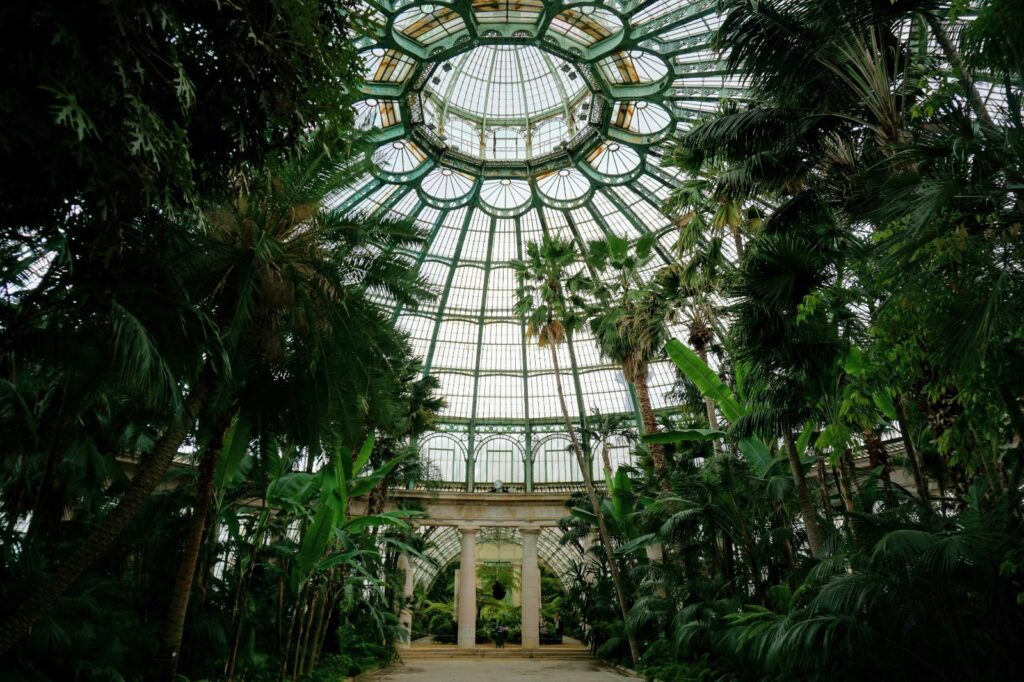For only three weeks per year, in springtime, the Royal Greenhouses in Laeken open their doors to the public. During this time, visitors flock to the peaceful and serene greenhouse complex that dates back to 1873.
This year, visitors could have a peek inside the impressive greenhouses from 15 April to 8 May, and The Brussels Times managed to pay the highly sought-after architectural gem a visit.

The Royal Greenhouses in Laeken. Credit: The Brussels Times
Apart from the extraordinary architecture, the garden and greenhouses are known for their huge collection of very rare tropical and subtropical plants that have been collected from all over the world by the royal gardeners.
This time of year is the highlight of the blooming season, as can be admired in the Hallerbos Hyacinth flower festival and the annual Ghent Floraliën festival, resulting in a colourful spectacle embellished with mesmerising scents wherever you go.
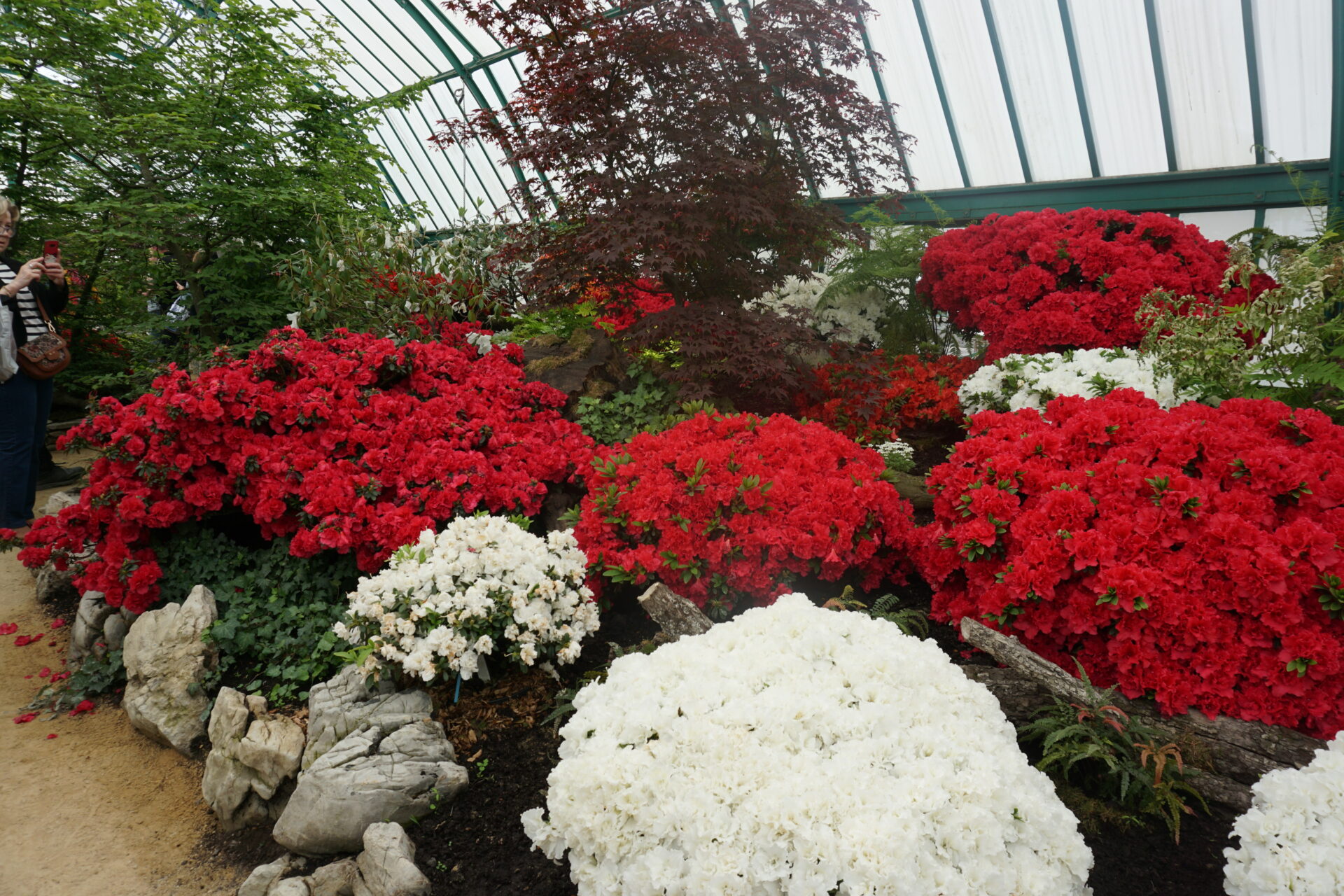
The Royal Greenhouses are filled with colourful flowers and their mesmerising scents. Credit: The Brussels Times
A royal complex
The complex was designed for King Léopold II in 1873 by architect Alphonse Balat and was built in the classical style typical of the time period, taking a total of 21 years to complete.
The result is a complex of seven stunning Art Nouveau greenhouses with the silhouette of a glass city, nestled into an undulating park landscape.

Inside the Royal Greenhouses of Laeken. Credit: The Brussels Times
Symbol of colonial wealth
While the inauguration of the greenhouses took place in 1880, the complex was expanded afterwards.
During this period, the king was preparing the Congo Free State, his private colony that was under his brutal rule from 1885 to 1908.
The violence used by Belgian officials against indigenous Congolese and a ruthless system of economic exploitation eventually led Belgium to take official control of the country, after which it became Belgian Congo in 1908.

The Japanese Tower as viewed from the royal garden. Credit: The Brussels Times
After the riches from his personal colony began to come in, the greenhouses were expanded and intended to be seen as a symbol of the king’s colonial wealth, with many plants from Central Africa illustrating that power. An obvious example is the Congo Greenhouse, which was built in between 1886 and 1888.
Paying a visit
The annual tradition of opening the greenhouses up to the public was introduced by Léopold II, as he wanted to let the people in on his glimpse of paradise, and has been taking place for more than a century.
Visitors are allowed in the gardens as well as the large complex of steel and glass greenhouses, where they can marvel at the abundance of exceptional flowers and trees.
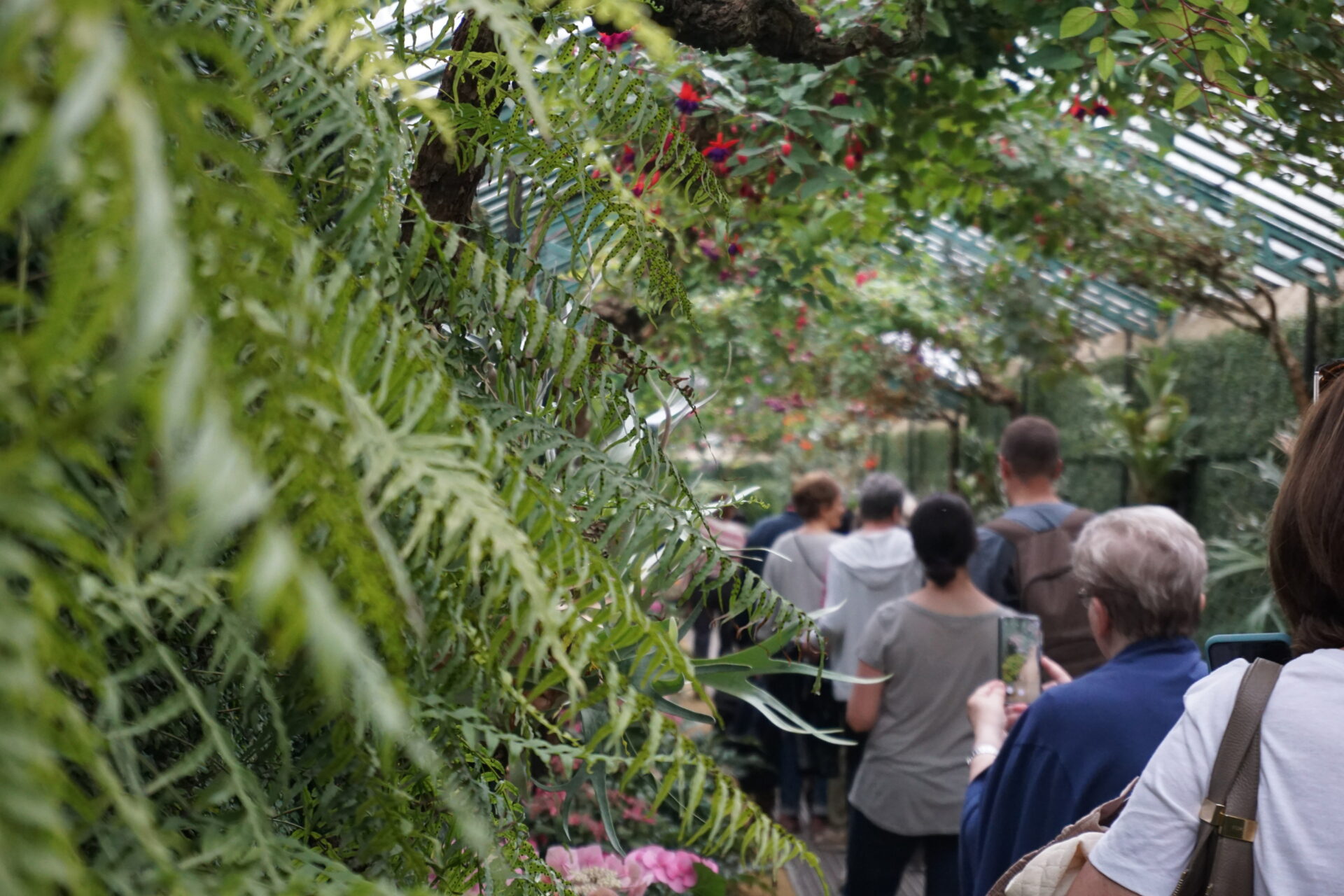
Plenty of visitors flock to pay the Royal Greenhouses a visit in springtime. Credit: The Brussels Times
Both an indoor and outdoor experience, there is the option of taking a short route of around 1.5 hours or paying a longer visit of 2.5 hours during the day.
The long route includes a stroll through the gorgeous gardens of the Royal Domain, allowing you to admire the architecture of the greenhouses from a distance and discover the hidden gems in the park, after which you will enter the greenhouses.

The Royal Greenhouses of Laeken viewed from the royal garden. Credit: The Brussels Times
On the shorter walk, you only tour the insides of the greenhouses. The complex consists of different plateaus, galleries and squares, all of which have a different theme and collection of trees and plants. A path leads you through all the areas, from the Palm Greenhouse to the Winter Garden and the Orangery.
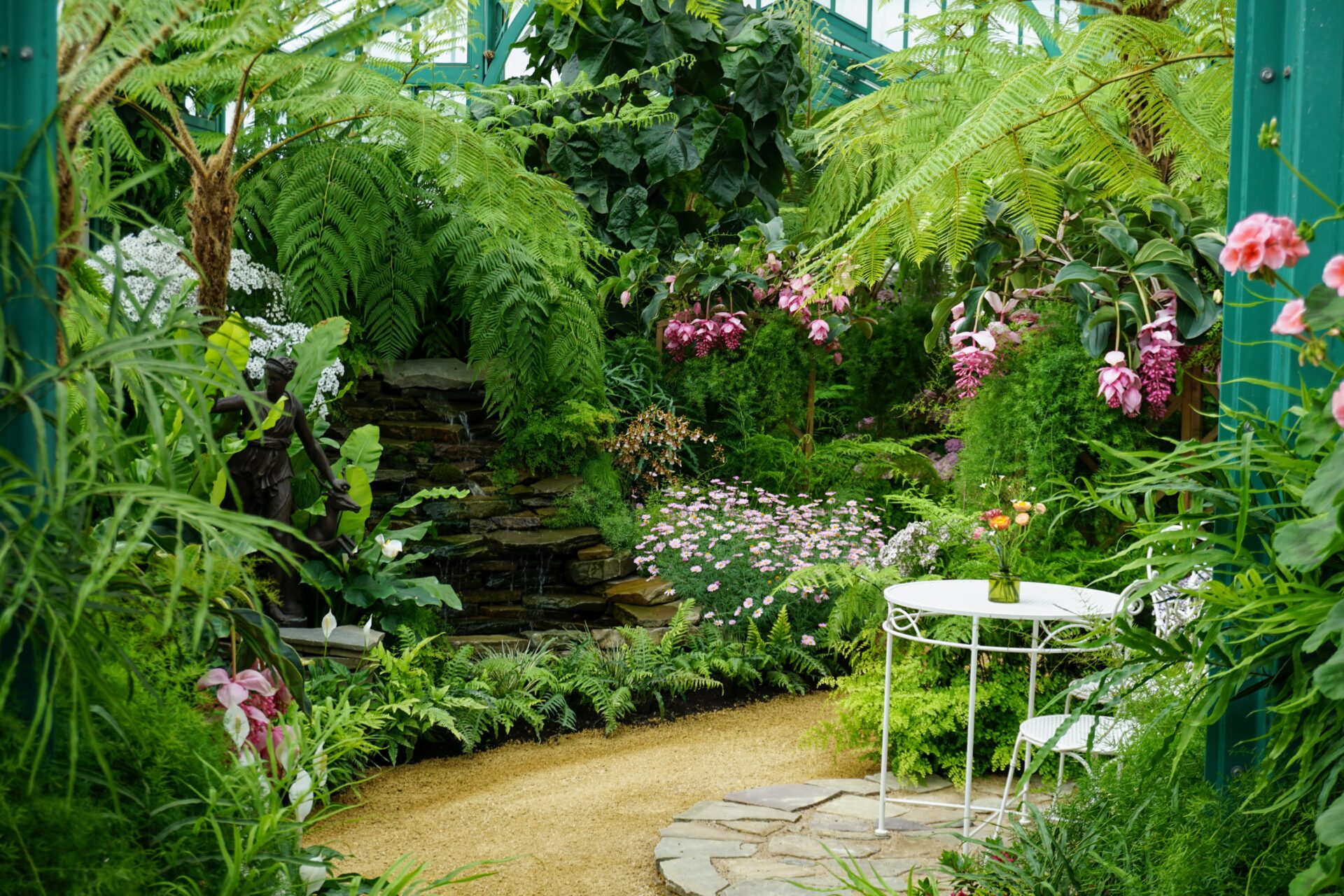
Inside the Royal Greenhouses. Credit: The Brussels Times
Some of the plants that belonged to King Léopold II’s original collections still exist, while others have been introduced to the greenhouses by its royal gardeners over the past century.
The current collections respect the spirit that prevailed when the original collections were planted and the Royal Greenhouses still contain an enormous number of rare and valuable plants.
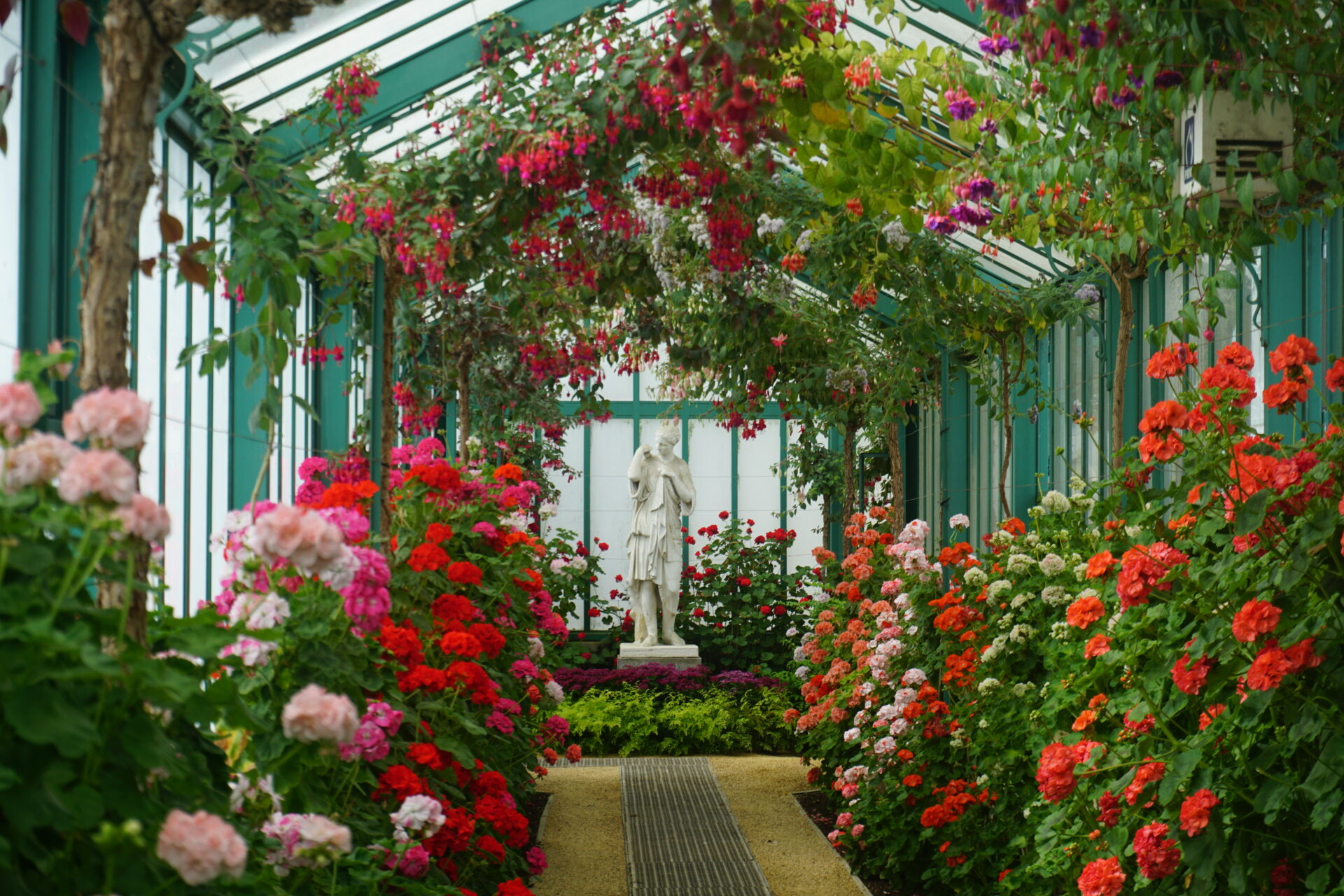
A statue inside the Royal Greenhouses of Laeken. Credit: The Brussels Times

